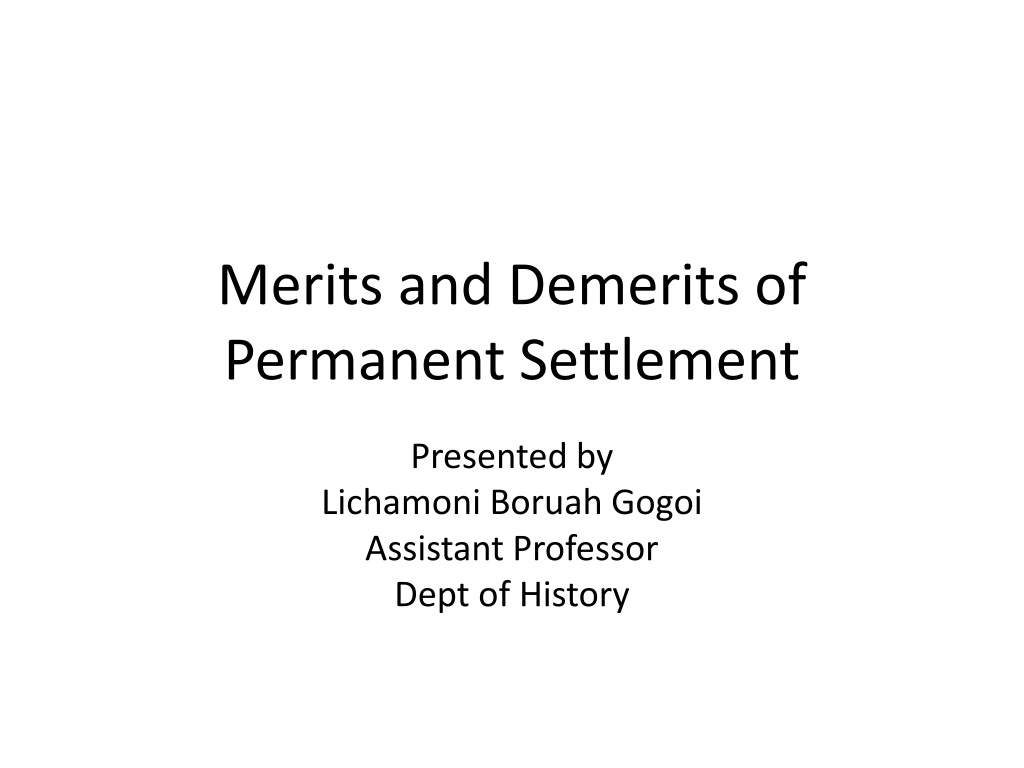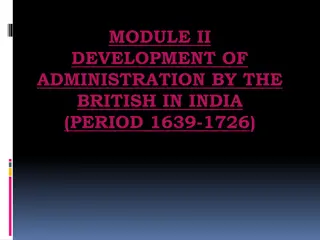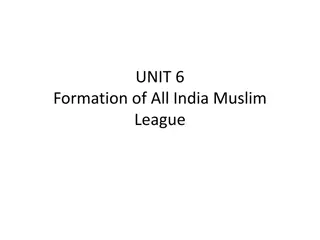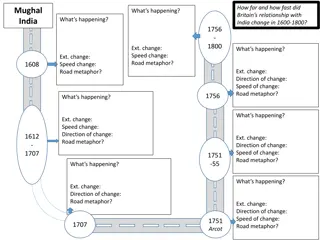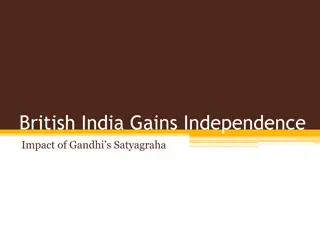Analysis of Permanent Settlement in British India
The Permanent Settlement introduced by Lord Cornwallis in 1793 empowered zamindars to collect revenue, causing peasants to become tenants. While it provided security, it led to various issues such as high land revenue, conflicts, and hereditary landlords. The system failed to satisfy the British, zamindars, and peasants, resulting in peasant revolts and famines in Bengal.
Download Presentation

Please find below an Image/Link to download the presentation.
The content on the website is provided AS IS for your information and personal use only. It may not be sold, licensed, or shared on other websites without obtaining consent from the author. Download presentation by click this link. If you encounter any issues during the download, it is possible that the publisher has removed the file from their server.
E N D
Presentation Transcript
Merits and Demerits of Permanent Settlement Presented by Lichamoni Boruah Gogoi Assistant Professor Dept of History
What is land revenue ? Lands revenue means all sums and payment in cash or kind received by the ruler or government from any person for the land held by him. It is considered as one of the major sources of income of a state . Specially in the preindustrial period it istheonly source of income for the state. Importance was laid on the collection of land revenue .
Land Revenue systems introduced by the British Introduced three types of land revenue systems in India Permanent Settlement Rytowari system Mahalwari system
Permanent Settlement and its features A land revenue system introduced by Lord Cornwallis, the Govornor General of Bengal in 1793. The zamindars were empowered to collect the revenue from the peasants and to pay it to the East India Company . The amount to be paid was fixed permanently. The Zamindars were recognised as the owner of the land. The system was also known as Zamindari System. The system was most prevalent in West Bengal, Bihar, Odisha, U.P. and Andhra Pradesh.
Merits of the Permanent Settlement The zamindars became the owner of the land which inspired them to develop their zamindaris and better care to his farmers. The system provided security both the zamindars and the farmers. The landlord became grateful to the East India Company authority and became merrily supporter of the British. Becoming easy for the British officers in formulating annual Budget as the amount of revenue collection was fixed The settlement set free the British officials from revenue activities .
Demerits of the Permanent settlement The peasants lost their rights over the land and turn into tenants. The land revenue was so high the zamindars failed to realize the land revenue from the farmers and could not pay the amount to the Government. Land assessment was not done properly, which led to many conflict. Created a class of hereditary landlord. The government lost a share of the unearned increment forever.
Conclusion The permanent settlement failed to satisfy any agency i.e the British authority, the Zamindars, and the peasants. The peasant oppression increased which resulted in Peasant revolts in Bengal. Famines occurred in different parts of Bengal. The British Government did not expand the settlement to other parts of India. Introduced Rytowary and Mahalwari systems later.
